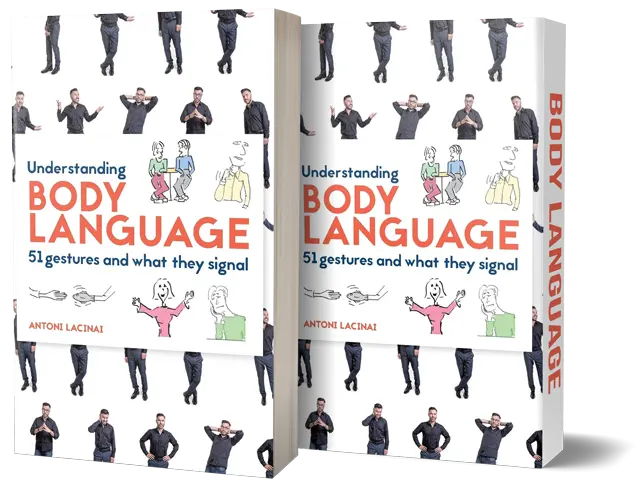Team Antoni Explains
Public speaking abilities are critical for effectively communicating your message and engaging with your audience. The usage of signposts in your Speech is an excellent method to employ to improve your speaking talents.
Signposts act as guideposts or signals, assisting your audience in navigating your presentation and better understanding your concepts. This article will look at how signposts may help you improve your public speaking abilities and offer practical advice on using them effectively.
What is a Signpost in a Speech?

Signposts in Speech are accurate words, phrases, or gestures that signal transitions, significant moments, or summaries within a presentation. Their goal is to improve your Speech’s flow, consistency, clarity, and organization. By carefully employing signposts, you can assist your audience in following your ideas, retaining information, and interacting more successfully with your message.
Why are Signposts important in your Speech?
Signposts are helpful in speeches because they:
Increase audience engagement: Use signposts to keep your audience engaged and attentive throughout your presentation.
Enhance comprehension: They provide structure and clarity, making it easier for the audience to understand and remember your key points.
Ensure smooth flow: Maintain a continuous and logical flow in your Speech using signposts to promote transitions between topics.
Reinforce key messages: They reinforce critical themes, emphasizing the primary takeaways for improved memory.
Guide the audience: Signposts execute as navigational indications, assisting the audience in successfully following and maintaining your presentation.
Also, Read this >>> Seven Steps to Success
Types of Speech or Presentation Signposts

Transition Signposts
Transition signposts are used to smoothly guide your audience from one idea or section to another. They can be words or phrases such as “firstly,” “on the other hand,” or “in conclusion.”
By utilizing transition signposts, you provide your audience with clear clues regarding the direction your Speech is headed. This enhances the general flow of your presentation, making it easier for your audience to follow your ideas or story.
Enumeration Signposts
Enumeration signposts help you organize and present various ideas or signs throughout your Speech. Phrases like “there are three main reasons,” “first of all,” or “in addition” imply that you are about to present a list of connected facts.
These signposts improve clarity and understanding, making it more straightforward for your audience to understand and recall the many components of your presentation.
Summary Signposts
Summary signposts are used to summarise significant ideas or arguments from your Speech. Words or phrases like “in summary,” “to summarise,” or “the main takeaways are” signal that you are about to deliver a brief summary of the main topics discussed. Summary signposts help clarify your message, ensuring that crucial points are not missed and enhancing audience understanding.
Tips for Effective Use of Signposts in Speech
Consider the following suggestions for making the most of signposts in your Speech:

- Ensure your signposts are communicated in clear and concise language so your audience will understand and follow them.
- To achieve a smooth and natural delivery, practice inserting signposts into your Speech and practice your delivery. For the most significant effect, practice the placement and timing of your signposts.
- To emphasize the meaning of your signposts, use visual aids or gestures. Visual signals help your audience comprehend and engage with your Speech even more.
- Use a range of signposts kinds to keep conversations engaging and dynamic. To effectively direct your audience through your presentation, experiment with varied places, such as at the beginning of a segment or before a vital moment.
Examples of Signposts in Speech
Consider the following excerpts from a sample speech to illustrate the use of signposts:
Example 1:
“Ladies and gentlemen, let us begin by looking at the economic causes that have contributed to the current crisis. First, we’ll look at the consequences of decreased consumer spending. Second, we will examine the consequences of decreased corporate investments. Finally, we will analyze the role of government policy in worsening the problem.”
Example 2:
“As we conclude this section, let’s summarize the key takeaways. In summary, we have explored the social, economic, and environmental benefits of renewable energy. Now, let’s transition to the next part of our discussion, where we will examine the challenges faced in implementing renewable energy solutions.”
In these examples, the transition and summary signposts help the audience navigate the Speech, understand the structure, and grasp the main points effectively.
Also Read: Clarity In Your Communication Is Vital
How to Build Signposts into Your Presentation Opening?
Including signposts in your presentation start may quickly capture your audience and establish the tone for your Speech. Here’s how to include them in your presentation’s opening:
- Hook the audience: Begin with an attractive opening remark or tale to capture your audience’s attention. This serves as a first signpost, signaling the beginning of your discourse.
- Provide an overview: After getting the audience’s attention, give them a quick rundown of what you’ll discuss in your presentation. This acts as a guidepost for the audience to understand the structure and direction of your Speech from the start.
- Specify your goals: Communicate clearly the aims or objectives you hope to achieve with your presentation. This signpost sets expectations for the audience and assists them in understanding the objective and significance of your presentation.
How to Use Signposts Throughout the Body of Your Speech?
It is critical to carefully employ signposts to maintain clarity and consistency throughout the body of your Speech. Here’s how to successfully use signposts throughout your Speech:
- Transitions between important topics To effortlessly convey your audience from a critical point to the next, use transition signposts. Phrases such as “moving on to our next point” or “Now let’s consider” aid in signaling the transition and creating a smooth flow.
- Supporting information enumeration: Use enumeration signposts to signify the entrance of supplemental facts or examples within each significant point. Phrases like “firstly,” “secondly,” and “for example” assist your readers in anticipating and following along.
- Key points summarised: Use summary signposts to review the major topics addressed at critical points in your Speech or when transitioning between sections. This improves audience understanding and emphasizes crucial points.
How to Create Signposts in the Conclusion of Your Presentation?
Signposts are essential in winding up your Speech and leaving a lasting impact at the end of your presentation. Here’s how to make signposts toward the end:
- Summarize the main points: Begin your conclusion by summarising the main themes you discussed during your Speech. To communicate this recapitulation and emphasize the essential concepts, use summary signposts.
- Call to action or final thought: Finish your Speech with a call to action or a unique idea for the audience. This may be “Let us now take action by…” or “In conclusion, remember that…”
-
What Is the Difference Between a Signpost and a Transition?
While signposts and transitions are similar, there is a difference between the two. A transition is a form of indication that suggests a change or movement from one concept or section to another. It acts as a link between concepts and aids in the flow and consistency of your Speech.
On the other hand, signposts are a larger category that includes transitions and other forms of indicators like enumeration and summary markers. Signposts are used to direct the audience’s attention, give structure, and improve comprehension.
Frequently Asked Question
Signposts are helpful in speeches because they assist the audience in following the speaker’s train of thought and remaining engaged with the material. They create distinct transitions between different portions or concepts in the speech, making it more cohesive and understandable.
Some examples of frequent sorts of signposts used in speeches are:
Introduction: Announcing the start of a speech and introducing the topic.
Agenda: Outline the major themes or format of the speech on the agenda.
Transition: A change from one point or segment to another.
Summary: Summarising the important themes mentioned thus far.
Example: Giving an instructive example to illustrate an argument.
Contrast: Emphasising a distinction or opposing perspective.
Conclusion: Bringing the speech to a close and leaving a lasting impact.
Signposts enhance speech clarity by giving straightforward signals and markers that direct the listener through the speaker’s thoughts. They assist listeners in expecting the speaker’s next point, understanding the links between various concepts, and recognizing the general structure of the speech.
Yes, Signposts can be used in professional and casual presentations. While the language and tone may differ depending on the occasion, the goal of signposts stays the same: to improve the clarity and organization of the speech.
Signposts should be given clearly and confidently. The speaker might emphasize the marker words or phrases using voice modulation or gestures to call attention to them. Before going on to the next point, allow the audience a minute to register the signpost.
While signposts are typically utilized in oral presentations or speeches, they may also be used in written essays or articles. Signposts assist in directing the reader through the structure and flow of the written text in these circumstances.









